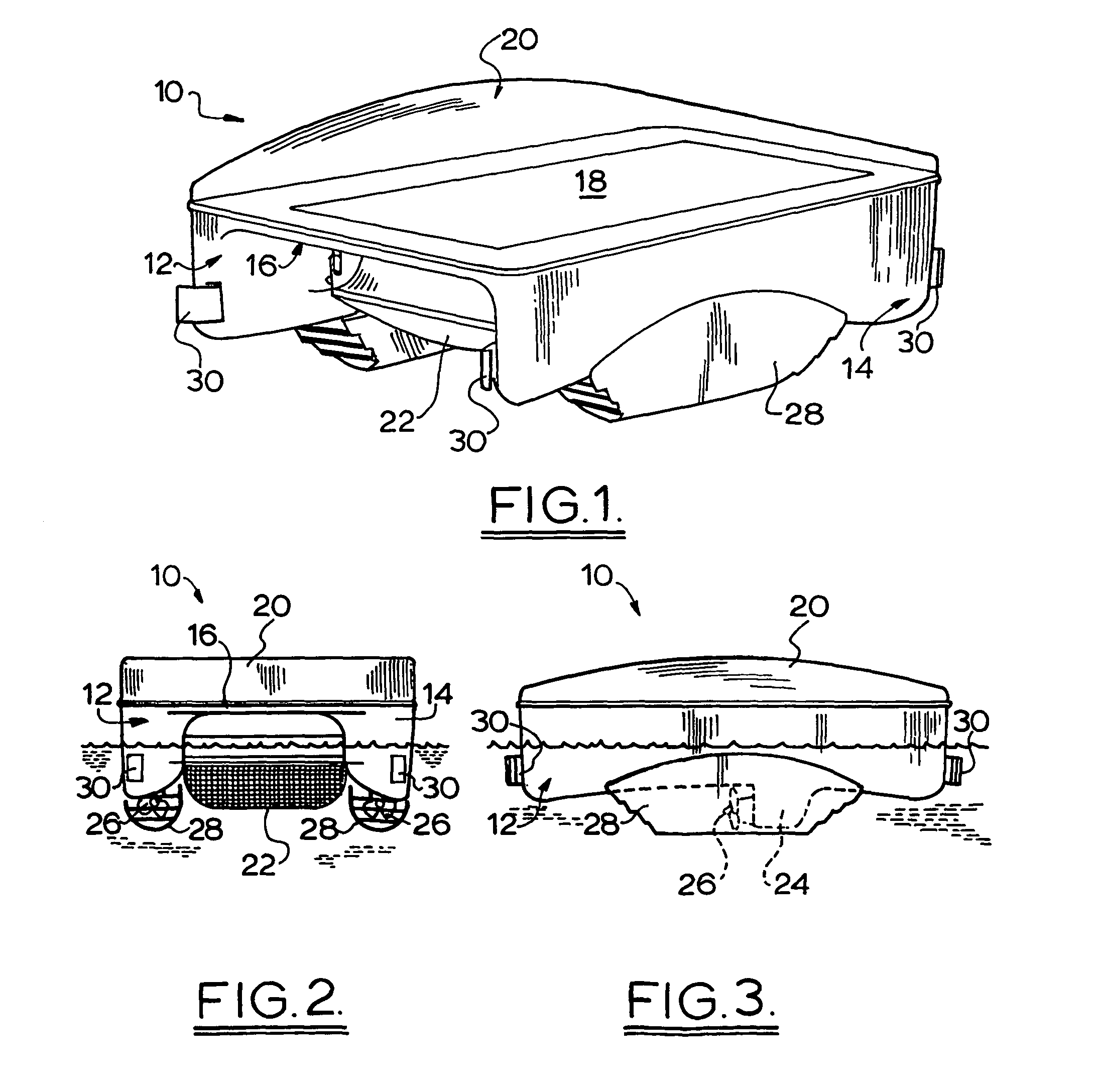Dual direction water surface skimmer and pool side docking device
a self-propelled device and dual-direction technology, applied in water cleaning, special-purpose vessels, transportation and packaging, etc., can solve the problems of not being able to effectively reverse, not covering the surface of the pool or pond in a very efficient manner, and easily getting stuck in the pool corner. , to achieve the effect of simple and sophisticated functions and facilitate the transfer of debris
- Summary
- Abstract
- Description
- Claims
- Application Information
AI Technical Summary
Benefits of technology
Problems solved by technology
Method used
Image
Examples
Embodiment Construction
[0019]Having portrayed the nature of the present invention, particular examples will now be described with reference to the accompanying drawings. However, those skilled in the art will appreciate that many variations and modifications can be made to the examples without departing from the scope of the invention as outlined above. In the accompanying drawings:
[0020]FIG. 1, is a perspective view of a swimming pool skimmer vessel that comprises the first example of an implementation of the invention.
[0021]FIG. 2 is an end elevation of the skimmer of FIG. 1.
[0022]FIG. 3 is a side elevation of the skimmer of FIG. 1.
[0023]FIG. 4 is a block diagram of a simple control means for use with the skimmer of FIGS. 1–3.
[0024]FIG. 5 is a diagrammatic plan view of a pool showing a sequence of positions (from 1 to 27) for the skimmer of FIG. 1 employing the control means of FIG. 4.
[0025]FIG. 6 a side sectional elevation of the skimmer of FIGS. 1–3 with arrows indicating the path taken by water throu...
PUM
 Login to View More
Login to View More Abstract
Description
Claims
Application Information
 Login to View More
Login to View More - R&D
- Intellectual Property
- Life Sciences
- Materials
- Tech Scout
- Unparalleled Data Quality
- Higher Quality Content
- 60% Fewer Hallucinations
Browse by: Latest US Patents, China's latest patents, Technical Efficacy Thesaurus, Application Domain, Technology Topic, Popular Technical Reports.
© 2025 PatSnap. All rights reserved.Legal|Privacy policy|Modern Slavery Act Transparency Statement|Sitemap|About US| Contact US: help@patsnap.com



